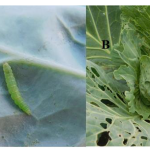The recently held BIMSTEC 2nd Foreign Ministers retreat in New Delhi on 11 and 12 July brought into focus a lot of important issues. This retreat not only provided an opportunity for the foreign ministers to discuss matters of mutual interest in an informal setting, but also allowed Dr Jaishankar, the Indian External Affairs Minister, to speak on the sidelines with his Myanmar counterpart, U Than Shwe, about the growing border instability, which facilitates the trafficking of people, proliferation of online scams, and transportation of illegal drugs across borders. The issue of illegal narcotics trafficking, a severe crime affecting national health, well-being, and security, was a key focus. The UNODC has highlighted Myanmar’s significant role in the Golden Triangle, a central drug trafficking hub since the 1950s. Despite a decline in opium cultivation since 2015, Myanmar was the second-largest opium producer until 2022, contributing to 25 percent of global production. However, in 2023, Myanmar became the world’s top opium producer with 1,080 tonnes, while Afghanistan’s output fell to 330 tonnes following a Taliban crackdown. The UNODC warns that Myanmar’s opium production could rise further, posing significant security risks across Asia, including India. The aftermath of the COVID-19 crisis and the 2021 military takeover have severely weakened Myanmar’s economy. The ongoing civil war between the pro-democracy groups, armed ethnic groups, and the Junta has further exacerbated the situation. The economy, which had grown at an average annual rate of 6 percent from 2011 to 2019, contracted by 18 percent in 2021, followed by a modest 3 percent growth in 2022. The devaluation of the kyat by nearly half led to 16 percent inflation, with the World Bank forecasting a minimal 1 percent growth for 2024. These figures underscore the dire economic conditions in Myanmar. Industries like construction, garments, tourism, and hospitality suffered significant job losses, while increased fuel prices and a stronger dollar further strained the economy. The constant security threats, and governance disruption following the military takeover in February 2021 have pushed farmers in remote areas to cultivate opium to survive, a crop they had been growing since the pre-Independence era. While plant-based drugs have seen a resurgence, synthetic drugs like methamphetamines have also gained a lot of popularity, contributing to a decline in opium production in 2015. The ease of producing synthetic drugs compared to heroin, with synthetic drugs requiring less labour and specific environmental conditions, has driven this shift. Methamphetamines are synthesised in indoor labs by small teams of chemists, yielding higher profits for less labour. In addition, the availability of alternative raw materials further facilitates low-cost production with a shift from traditional precursors like ephedrine and pseudoephedrine to phenylacetone (P-2-P) based manufacturing methods. The majority of synthetic drug and opium production in Myanmar is concentrated in the Shan State’s ‘special regions,’ under the control of rebel groups like the United Wa State Army and National Democratic Alliance Army, which collaborate with organised criminal networks. This area benefits from fragmented state jurisdictions and proximity to China and Southeast Asian drug and precursor markets. In 2023, the UNODC report noted that the illicit manufacture of these drugs is increasingly expanding to neighbouring countries. India shares a 1643 Km porous border with Myanmar. The proximity of India’s northeastern states—Manipur, Mizoram, Nagaland, and Arunachal Pradesh—to Myanmar’s porous border coupled with the Free Movement Regime that allows 16 km access from both sides, facilitates easy access for drug smugglers, traffickers, and insurgent groups. This accessibility contributes to the trafficking and distribution of illicit drugs within these regions, exacerbating local and regional security concerns.
Regional Drug Menace

Sign Up For Daily Newsletter
Be keep up! Get the latest breaking news delivered straight to your inbox.
By signing up, you agree to our Terms of Use and acknowledge the data practices in our Privacy Policy. You may unsubscribe at any time.
Leave a Comment Leave a Comment
Stay Connected
Latest News
Recent Posts
- Hazratbal must remain above controversy, a space of devotion not division: National Conference
- Talk of PSA in Hazratbal controversy adds insult to injury, foolish and unacceptable: Aga Ruhullah
- Border dispute with China biggest security challenge: CDS General Anil Chauhan
- DSEJ issues instructions regarding reopening of Schools, Resumption of Class Work
- “Inconsiderate, designed to hurt people’s sentiments”: CM Omar Abdullah slams J&K admin’s refusal to shift Eid-e-Milad holiday







